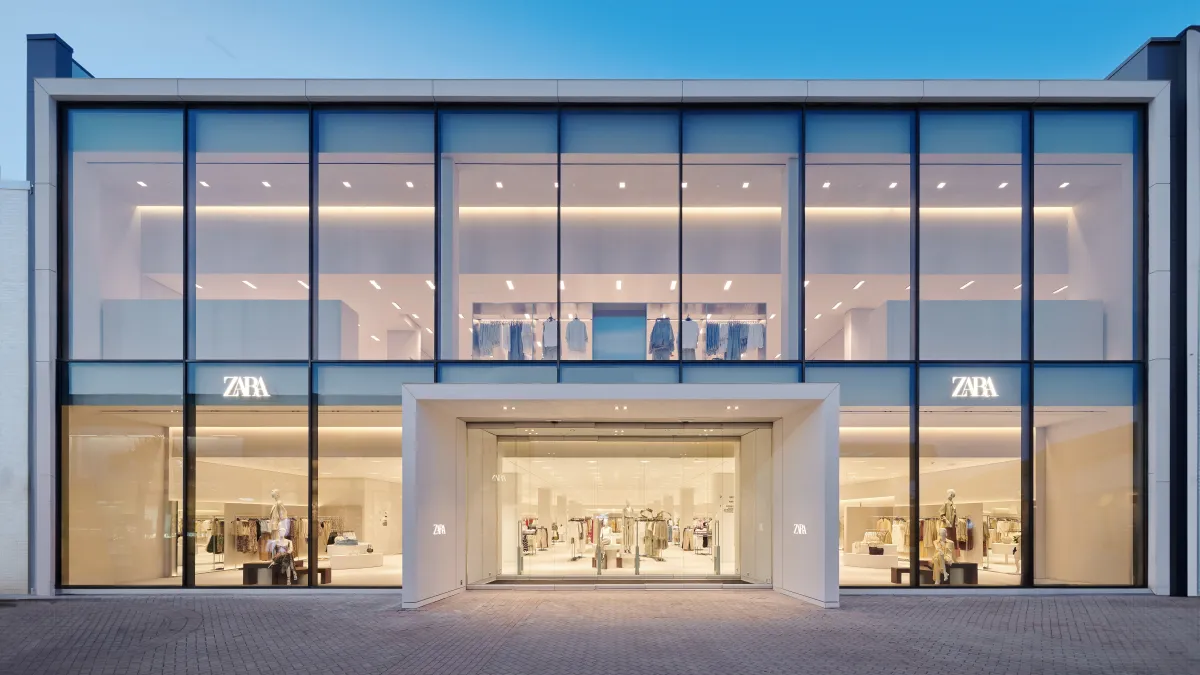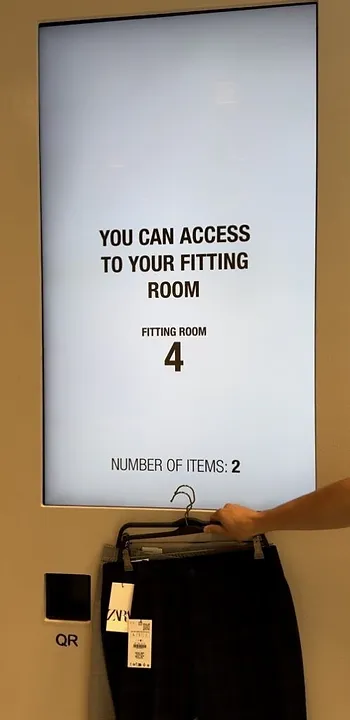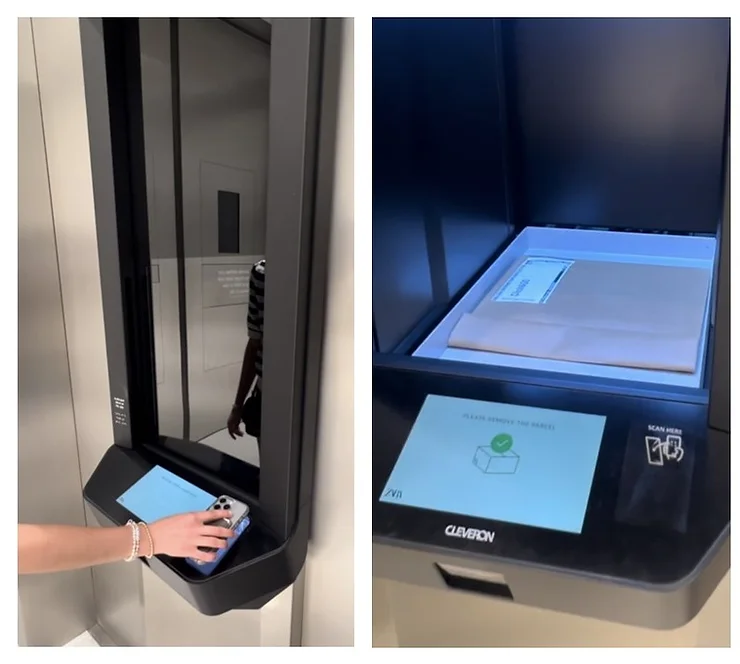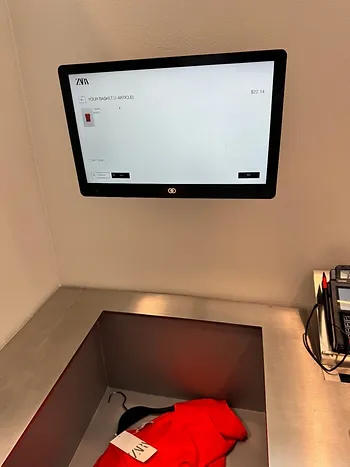The Transformative Power of Adaptive Retail: Reawakening Retail
- Juanita Neville-Te Rito
- Aug 1, 2024
- 7 min read

In today's rapidly evolving retail landscape, where consumer preferences are in a perpetual state of flux, businesses face an existential imperative: adapt or risk obsolescence. This isn’t new news but something we do need to continually remind ourselves so that our retail businesses don’t get complacent, fat and lazy.
The traditional paradigms that once defined success are no longer sufficient – remember where we could stack it high and watch it fly? Today’s consumer demands a level of personalisation, convenience, and seamless integration that transcends the boundaries of any single channel or touchpoint. Enter the concept of adaptive retail, a revolutionary approach that promises to redefine the very essence of customer experiences. A reawakening of sorts.
I think Adaptive Retail represents the next evolutionary step in the retail journey, an era where the lines between online and offline blur even further, and the customer's needs become the guiding force behind every strategic decision. By leveraging cutting-edge technologies and data-driven insights, retailers can create a dynamic, responsive, and highly personalised shopping ecosystem that anticipates and adapts to the ever-changing desires of their customers. I feel like I need to say this out-loud…..but not at any cost. The requirements to grow and deliver a profitable and sustainable retail business is an imperative. The adaptiveness of the business means it can right-size and grow its capabilities as it needs and customers morph.
The Cornerstone: Customer Intimacy
At the heart of adaptive retail lies a commitment to customer intimacy, a deep understanding of the unique preferences, behaviours, and aspirations that shape each individual's shopping journey. This customer-centric philosophy permeates every aspect of the adaptive retail experience, from product discovery and purchase to delivery and post-purchase engagement. For many retailers this will be a really BIG stretch. Why? Many retailers are not equipped with the systems, processes, rhythms or resources to deliver this. Nor do they truly know their customer – let alone intimately. But that isn’t an obstacle, more an inspiration to leapfrog and embrace this deeply within parts of the business first – where it is possible. Eat the elephant piece by piece.
For example, by harnessing the power of advanced analytics, artificial intelligence (AI), and machine learning, retailers can gain insights into their customers' habits, motivations, and pain points. These insights can form the foundation upon which adaptive retail strategies are built, which will allow businesses to tailor their offerings, messaging, and interactions to resonate with each customer on a personal level. It doesn’t need to be an all or nothing. Take one step at a time.
The Omnichannel Imperative: Blurring the Lines
In the age of adaptive retail, the traditional boundaries between online and offline channels dissolve, giving way to a truly unified, connected commerce [omnichannel] experience. Customers expect a consistent and cohesive brand experience across all touchpoints, whether they're browsing a retailer's website, engaging with a mobile app, or stepping into a physical store. But this can be incredibly hard with legacy systems, siloed operations and limited cash. This isn’t new thinking but it embraces leveraging advanced technologies so retailers can create interconnected ecosystems that seamlessly bridge the digital and physical realms.
Smart shelves, equipped with RFID tags and sensors, can detect a customer's presence and preferences, triggering personalised product recommendations and real-time inventory updates. Interactive displays and augmented reality (AR) applications allow customers to visualise products in their intended environments, enhancing the decision-making process and fostering a deeper connection with the brand.
Kroger in the US has implemented a sophisticated smart shelving solution known as EDGE (Enhanced Display for Grocery Environment), which leverages Microsoft Azure for data storage and processing. This technology integrates IoT-enabled sensors to replace traditional paper price tags with digital displays, providing a cleaner and more environmentally friendly shopping experience. This allows Kroger to achieve a massive unlock.
Digital Displays: The EDGE system displays prices, advertisements, nutritional information, and other product details digitally, eliminating the need for printed materials.
Personalised Shopping Experience: The smart shelves interact with customers' smartphones to provide personalised recommendations and promotions. For instance, the system can highlight products based on a customer's shopping list or dietary preferences, enhancing the overall shopping experience.
Operational Efficiency: Kroger's smart shelves use RFID and IoT sensors to monitor inventory levels, ensuring shelves are restocked promptly and accurately. This technology also supports dynamic pricing, allowing for real-time price adjustments based on market conditions.
Sustainability: The EDGE system is designed to be energy-efficient, using low-voltage current and aiming to switch to renewable energy sources in the future. This aligns with Kroger's goal to reduce electricity consumption by 40% across its stores.
This ticks many boxes from enhancing customer engagement, improved operational efficiency, and supporting sustainability initiatives.
The Supply Chain Transformation: Anticipating Demand
In the realm of adaptive retail, the supply chain itself undergoes a significant transformation, evolving from a reactive system to a proactive, demand-driven ecosystem [as much as retailers love to hate them, Shein is an excellent example]. By harnessing the power of big data analytics, AI, and predictive modelling, retailers can anticipate consumer demand with surprising accuracy, allowing them to optimise inventory levels, streamline logistics, and minimise waste.
This demand-driven supply chain not only enhances operational efficiency but also contributes to a more sustainable and environmentally conscious approach to retail. By accurately forecasting demand and minimising excess inventory, retailers can reduce their carbon footprint, promote responsible consumption, and align their practices with the growing consumer demand for eco-friendly and socially responsible brands.
The Convergence of Physical and Digital: Immersive Experiences & Personalisation at Scale
One of the defining characteristics of adaptive retail is the seamless integration of physical and digital experiences, creating immersive environments that captivate and engage customers on multiple levels. Through the strategic deployment of technologies such as augmented reality (AR), virtual reality (VR), and mixed reality (MR), retailers can transport customers into virtual showrooms, enabling them to interact with products in ways that were once unimaginable.
But I think this is an area where we really need to focus on eliminating the friction and pain points for a customer as opposed to finding a solution where there is no problem. Let’s take for example Zara’s new White Box Concept in Chicago. AI is playing a pivotal role in enabling this seamless integration to surface and allowing retailers to craft a more immersive and elegant experience in both worlds.
The latest omnichannel integrations in this concept represents Zara’s ongoing efforts to provide innovative, tech-forward retail destinations for shoppers. In the concept, various in-store technology solutions streamline traditionally time-consuming and labour-intensive activities. Think about what we hate when shopping at Zara – all the bloody lines and waiting for a change-room. Why do I have to line up in the standard line when I just want to click and collect? Here they have introduced solutions such as try-on, pick-up, and check-out. These self-service solutions, powered by Radio Frequency Identification (RFID) and robotics, significantly reduce friction for customers and allow Zara associates to dedicate more time to maintaining the elevated store experience by replenishing products, refolding items, and interacting with customers on the floor. Read more about how this is being delivered.
The Rise of Social Commerce: Tapping into Influencer Power + Shopper Power
In the era of adaptive retail, social media platforms have evolved from mere marketing channels into powerful commerce engines, giving rise to the phenomenon of social commerce. By seamlessly integrating shopping experiences into social media platforms, retailers can tap into the influential power of influencers, leveraging their reach and authenticity to drive product discovery, engagement, and sales.
Coach Play – Singapore
I recently visited Coach Play Singapore Shophouse which is a unique and immersive retail concept.The jewel in the crown of this experience “Coach World” on the top floor which features an immersive mirror room with LED displays bringing to life the brand's heritage and craftsmanship. 'Find Your Courage' is a series of short films which bring the room to life and explores Coach's 'Courage to Be Real' brand values and invites visitors to engage with a campaign featuring virtual model Imma and other Coach brand friends like Camila Mendes, Lil Nas X, and Youngji Lee – all incredible influencers from music and film.
Please ignore my speaking in the background 🤦🏼♀️
Now from a different angle - power to the people!!!
Don Don Donki – Singapore
Don Don Donki is a Japanese discount department store that combines a treasure hunt-like discount shopping experience with a wide assortment of Japanese products, fresh food concepts, and localised. This concept in many ways breaks the rules of what retailers have been taught but delivers such a WOW experience in a wonderfully analogue (with powerful digital) way. On this visit I noticed their unique system for gathering and displaying customer reviews, known as "Dondon Red Voice Reviews." This system allows customers to leave feedback and reviews about their shopping experience at Don Don Donki stores.
Customer Feedback Collection: Customers are encouraged to leave their reviews and feedback, which can include their opinions on the products, store layout, customer service, and overall shopping experience. This feedback can be left through various channels, such as in-store kiosks, online platforms, or mobile apps.
Review Compilation: The collected reviews are compiled and analysed. This analysis helps the store management understand the customers' sentiments and identify areas for improvement.
Display of Reviews: The reviews are then displayed prominently within the store. This transparency allows other customers to see the feedback from their peers, fostering a sense of community and trust.
Response and Action: Store management takes the feedback seriously and often responds to the reviews. They may implement changes based on the suggestions and criticisms received, aiming to enhance the overall customer experience.
The Team Member Experience: Empowering the Workforce
While adaptive retail strategies primarily focus on enhancing the customer experience, they strongly recognise the pivotal role played by the retail workforce. By empowering associates with cutting-edge technologies and training opportunities, adaptive retailers are fostering a more engaged, knowledgeable, and productive workforce, capable of delivering exceptional service and driving customer satisfaction.
Quite frankly we have been letting our teams down by not empowering them with the information or access to product information, inventory levels, and customer preferences. This level of real-time data and insights will allow our team members to provide personalised recommendations, streamline checkout processes, and offer a truly elevated shopping experience.
A Retail Reawakening: Embracing the Adaptive Mindset
As the retail landscape continues to evolve [and will forever], the concept of Adaptive Retail will become increasingly crucial for businesses seeking to stay ahead of the curve. By embracing a culture of continuous adaptation, retailers can future-proof their operations, anticipating and responding to emerging trends, technological advancements, and shifting consumer behaviours with agility and resilience.
Furthermore, Adaptive Retail strategies will continue to push the boundaries of innovation, leveraging emerging technologies to redefine the shopping experience further. I do believe that the retailers that thrive in this dynamic environment will be those that embrace a mindset of constant learning, experimentation, and adaptation, continuously refining their strategies and offerings to meet the ever-changing needs of their customers.
By leveraging cutting-edge technologies, data-driven insights, and a relentless focus on customer satisfaction, adaptive retailers can forge deeper connections with their customers, foster loyalty, and drive long-term success in an increasingly competitive and rapidly evolving market.
Need to reawaken you retail. Let's chat. Juanita@rxgroup.co.nz

















Kommentare